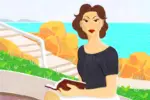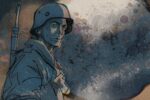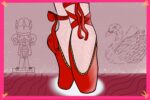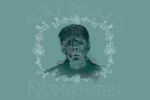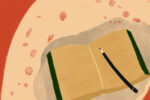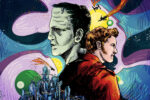Rather than utilizing dialogue to intrigue readers with mystery like in the novel, the Royal Ballet’s production of “Frankenstein” begins with sounds and glimpses of harsh storms to set a grave tone. Royal Ballet released the ballet “Frankenstein” worldwide in 2016 and the performances were well-received by critics. In October 2023, Chicago’s Joffrey Ballet presented the haunting “Frankenstein” show that represented horrors of the human condition like death and identity. The show included a heartbreakingly vulnerable naked and corpse-like creature (aptly named Creature) highlighted by sharp pyrotechnics and strobe lights.
Ballet is a bewitching medium, often depicted as a theatrical and delicate sport. However, the form’s intricacy disintegrates as the production unfolds the gritty “Frankenstein” story. The ballet medium allows audiences to capture the formidable emotions on stage through orchestra and movement.What unfolds is one of the most accurate portrayal and adaptation of Shelly’s strange novel.
The Creature as a character broke ballet conventions in its dancing and appearance. Instead of appearing like pop-culture’s green monster, the Creature appears vulnerable with his stitched and scarred body. Besides this iconic appearance, the ballet’s audience must observe the choreography, music and productive elements to understand the novel’s tragedy as it comes to life.
Projection designer Finn Ross’ background transitions between the three acts displays a skull that uneasily turns to face the audience. As the acts progress, half of the skull forms muscles and blood and opens its eye to show a pupil.
Despite the spooky background effects by Ross and suspenseful music by Lowel Lieberman, the late choreographer Liam Scarlett also establishes warmth among the dances. The ballet begins with a family scene where there are constant touches to represent relationships between different dancers. The intimate embraces and face caresses present acceptance and community, especially shown between Victor Frankenstein and his lover Elizabeth.
In addition to utilizing their bodies, the dancers perform with their faces as well. Even without words, they can evoke misery through their faces.
When Frankenstein’s teacher reveals a corpse on an examination table in Act One, the synthetic body wiggles on the table with an eerie energy. The students remove body parts and are visibly disturbed while Frankenstein is fascinated. With such dramatic reactions from the dancers, the audience members can feel the nausea or despair along with them.
The choreography shows a sense of togetherness among the background dancers, but there’s individuality, especially shown through Frankenstein’s character.. Orchestra music frantically plays in the background while Frankenstein decides to create his monster. He dances alone with orchestral music that changes with his bewildered and frenzied state of mind. There are flashing lights and bolts of lightning on the dark stage as he takes the role of an all-powerful creator. Interestingly, the ballet decides to portray Frankenstein as an ambitious and tortured student rather than a mad scientist like the film adaptations. He is shown interacting with his young peers in a black and white costume and carrying a book, confirming the intellectual character readers know from Shelley’s novel.
The family scenes are the only ones that carry color and hope with clothing and music. When Elizabeth comforts Frankenstein in his depressed state with dances from their childhood; the playful connection the audience was introduced to is reignited. The reconciliation is so emotional that audiences don’t realize the Creature creeping in the dim background among the trees, like a thing of nature. The Creature eventually dances alone and attempts to recreate the tender scene by caressing his face and shoulders and bowing to an invisible person. The stark contrast between distress in connection and loneliness is heartbreaking.
The Creature torments and taunts his creator just like the novel by appearing at the ball, where he is concealed among the dancers. While the background dancers prance together, Frankenstein stumbles around in a freakish state when he sees his Creature roaming and hiding among the people. Since the Creature cannot reveal his intelligence through dialogue like the novel allows for, viewers of the ballet can understand the Creature’s desperate nature and the death threats he makes to Frankenstein with violent gestures.
The Creature’s simultaneous animalism and humanity are disturbing. However, the Creature and Frankenstein’s turmoil are both present, allowing the audience to question whom they empathize with. The ballet offers solo, partner and group dances to reveal a story of relationships between humans and what they desire. The “Frankenstein” ballet accomplished an ode to nature at its best and its worst.
The show and its unusual gothic elements are available through archive.org. Watch and ponder: what other unconventional mediums can be used to tell horrific and classical stories?






